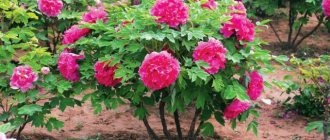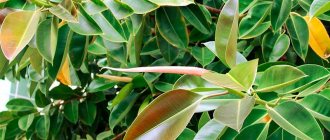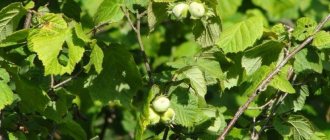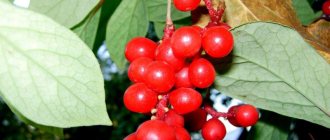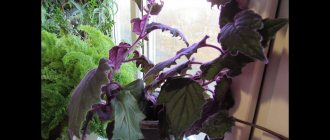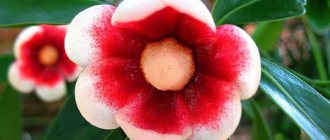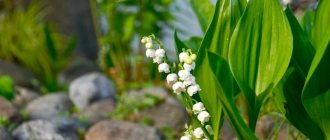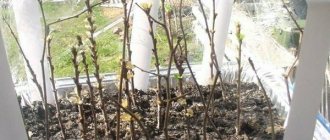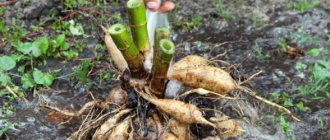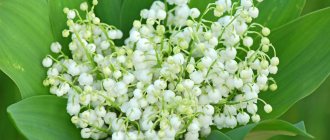Description of the purchase: varieties and varieties
Kupena multicolor belongs to plants of the lily family.
Kupena is the owner of a graceful curved stem, on which bright oval green leaves are located in two even rows, and small white flowers bloom in their axils. There are about 50 species of kupena in nature. Most often you can find 3 of them.
Kupena medicinal
Medicinal purchase. It grows among forests and shady bushes of the northern hemisphere. Does not exceed half a meter in height, blooms in late spring - early summer. The fruits of the medicinal plant have a strong emetic effect.
Kupena fragrant
Fragrant bath. It grows up to 80 cm in height and has bluish-green leaves. The fragrant kupena blooms in mid-May and blooms for 5 weeks. This flower chooses the slopes of low mountains and hills, shady forest thickets and forest clearings as its habitat in nature.
Kupena multiflorum
Kupena multiflorum. This variety is most often planted by gardeners in pots and open ground. Multi-flowered bloom in early summer.
The rhizome of the kupena plant is interesting in its structure. It consists of links, and when last year’s shoot dies, a small area covered with cork remains in its place. In its appearance, it resembles a seal, which gave the coupon its second name, “Solomon’s Seal.” According to legend, King Solomon awarded this flower with his seal for its healing properties. After all, infusions from kupena root are known for their anti-inflammatory and wound-healing effects.
Attention. All parts of the product are poisonous.
Description of the plant
Flowers appear at the very beginning of summer, when there are still few flowering plants in the garden, and delight the eye with their white color and resemblance to miniature bells. Inflorescences are bisexual, collected in small groups in the leaf axils
The rhizome is horizontal; traces of dead shoots, reminiscent of seals, are clearly visible on it.
Kupena fragrant
For your information! The second name for the plant, given by the British, is “Solomon’s seal” for the thickenings on the roots of the plant. The word “kupena” itself was derived from the ancient Greek “knee” and “many” for a long rhizome consisting of many joints. In Russia it has many names - wolf berry, raven eye, hellebore, core, wolf fang.
This perennial not only has decorative qualities, but is also a powerful medicine that can cure or reduce the symptoms of many diseases.
Planting kupena
Kupena can be planted on any soil, as it is absolutely not demanding. But if you want the plant to look perfect, then it is best to move the cultivation of the kupena into the shade, onto fertile, dense soil. In the sun, the kupena will grow a little worse and look less impressive. When planting in open ground, it is desirable that the groundwater comes close to the surface. Regular watering is needed, but the plant does not tolerate stagnant moisture. Kupena feels best in the shade of trees, forming lush thickets in which even weeds cannot survive.
The plant prefers shady areas
Before planting kupena in open ground, the beds are first prepared. Drainage made of crushed stone or sand is poured into the prepared hole, and compost is added to the soil.
Growing kupena from seeds in garden floriculture is practically never encountered, because pollination of this flower can only occur with the help of long-proboscis bumblebees. Seeds are planted in late autumn, and sprouts appear in the spring, and sometimes even only in the 2nd year. In addition, a plant planted from seeds may lose its maternal characteristics. Such plants begin to bloom only in the 3rd year, and sometimes in the 5th.
Kupena: diseases and pests
Video: Coriander planting and care in open ground
Kupena is highly resistant to common plant diseases. During cold and rainy periods, the plant may be susceptible to powdery mildew or gray rot. In this case, you need to remove the affected areas and spray the remaining green mass with a fungicide solution, following the dosage given in the instructions.
A dangerous pest for the rosemary is the Solomon's sawfly, which is capable of gnawing leaves down to the skeletal veins. The green mass is eaten by larvae that lay small flying flies. They fight this scourge with the help of insecticides.
Caterpillar pest Kupena
Sometimes plants are attacked by pests such as caterpillars and slugs, which attack leaves and young shoots. In this case, you can try using traditional repellents, but it is much easier to use a complex pest repellent and spray the plants with it.
Caring for your bath
“Solomon’s Seal” is just a godsend for a garden that you don’t have time to care for.
Kupena does not need care, it grows in the garden as well as in natural conditions
The good thing about growing kupena is that this plant requires virtually no care. Flowers need to be watered only in dry times; in other periods, rainwater and groundwater will suffice. After watering, to avoid crust formation, the plant bushes are mulched. Flower growers advise avoiding loosening, because the rhizomes of the kupena are fragile and are not located too deep, so they can be damaged. The weeds survive only the first two years, then the kupena grows so that the weeds have no chance of survival. For the winter, the kupena does not need to be covered or dug up - it overwinters well in the open ground, and in the spring it will bloom with renewed vigor.
Features of the purchase
The herbaceous rhizomatous plant Kupena (Polygonatum) is a perennial. Most often in natural conditions it can be found on slopes and meadows. The rhizome of this flower becomes woody over time and is jointed (multi-jointed). It is located horizontally at the ground surface. With the onset of spring, the bush grows a new shoot from a bud located at the top of the root. In autumn, this stem dies off, leaving a mark on the surface of the stem, somewhat similar to a seal. To understand how old the kupena is, you just need to count the number of small round scars with a depressed center that remain from last year’s shoots. For this reason the plant was nicknamed “Solomon’s seal.”
The surface of the ribbed shoots is covered with smooth thin green skin. Some species have reddish-green skin. On stems bent in a semi-arc, large oval sessile leaf plates grow, which are alternately arranged. Their upper part is pointed, the edge is smooth, and the veins are raised.
Flowering of this plant is observed in May–June. First, along the lower edge of the shoot, bell-shaped snow-white buds hanging down grow from the leaf axils, and then the fragrant flowers themselves open. If pollination occurs, fruits, which are berries, will form in place of the flowers. At first, the fruits are colored pale red, which changes to black and blue as they ripen. This plant contains poison in its berries and seeds.
Plant propagation
The simplest and most effective way to propagate kupena is division.
The flower can be planted in open ground at any time of the year, but it is best to do this in late summer or early autumn. The planting site must be cleared of weeds and dug to a depth of 25-20 cm. The root of the kupena is geniculate and very fragile, so dividing it is very easy. The cuttings with a bud or stem are planted in the soil to a depth of 8-9 cm. They are placed horizontally.
Young plant
The first couple of years, the growth of the flower will occur slowly, until the root finally takes root, then the kupena will begin to grow intensively. It is recommended to divide the kupena once every 3–4 years, planting the divisions in the same place, otherwise the kupena may crush its neighbors in the garden.
9.Types of purchased:
Interestingly, according to the shape of the stems, kupenas can be divided into 2 groups - erect plants and bushes with arched shoots.
9.1. Polygonatum multiflorum
A flowering perennial with arched shoots 60–70 cm high with green, broadly lanceolate green leaves. The buds are long, drooping, located under the leaves on long stalks and painted white. The tips of the fused petals are greenish. Currently, based on this species, variegated plants with white longitudinal veins on the leaves have been bred. As the name suggests, the distinctive feature of this species is the inflorescences with 3 or more buds in each.
↑ Up,
9.2. Fragrant fragrant - Polygonatum odoratum
Attractive plants 60 - 90 cm high with drooping shoot tips. Leaf blades are entire, oval, green. The bell-shaped flowers are creamy-white, with greenish tips of the buds. During the flowering period, plants saturate the atmosphere with a pleasant aroma.
↑ Up,
9.3. Whorled weed - Polygonatum verticillatum
A species rarely grown in flower culture with thin, erect shoots reaching a height of 1.5 meters. Unlike most other species, these plants have narrow, green, sessile leaves collected in whorls. The buds are small, collected in axillary inflorescences and colored white or greenish. Flowering is later - often occurs in mid-summer.
↑ Up,
9.4.Kupena squat, dwarf or low - Polygonatum humile
Compact perennials, whose height does not exceed 15 - 20 cm. With erect or slightly curved shoots. Leaf blades are glossy, green, oval in shape. The flowers are tubular, greenish-white, drooping, located in the axils of the leaves in 1 or 2 groups.
↑ Up,
9.5. Sickle-shaped plant - Polugonatum falcatum
Fairly tall kupenas, up to 60 - 90 cm high, with arched stems. In the upper half, the shoots are often painted a bright burgundy shade. Cultivated varieties are distinguished by very abundant flowering and sometimes by the presence of longitudinal white stripes on the leaf blades. The flowers are greenish-white, collected in small axillary inflorescences of 2 - 5 buds. Flowering is quite early - sometimes occurs in the first half of May.
↑ Up,
9.6.Hooker's bud - Polygonatum hookeri
It is unlikely that by the appearance of this flower one can identify a kupena in this flower - it is so different from other varieties. These plants can be classified as primroses - the first buds appear on them when there is still snow in some places - in April. The stems are short - often do not exceed 4 - 5 cm in height, almost completely hidden by sessile, densely arranged, green leaves. The flowers are lilac, delicate, with wide open, oblong petals.
↑ Up,
9.7. Changeable kupena - Polygonatum commutatum
Tall appearance - these graceful plants can reach 2 meters in height!!! The shoots are thin, arched, with alternate oval green leaves. The buds are axillary, greenish, collected in small inflorescences of 2 - 3 flowers each, formed in late May - early June.
↑ Up,
9.8.Two-flowered kupena - Polygonatum biflorum
As the name suggests, these plants, about 60 cm high, form 2 buds in each leaf axil. The flowers are greenish, quite large, with fused petals. The flowering period is quite early - it can begin as early as the end of April.
↑ Up,
Kupena: combination with other plants
Kupena perfectly coexists with other plants that prefer shade and partial shade. She is friends with various types of ferns, hellebores, dicentra.
Bought in combination with dicentra Advice. If you do not keep the kupena under control by dividing the rhizome every few years, over time it can grow too actively and will oppress and even crowd out its neighbors in the flower garden.
Burning Purchase
The bush we are talking about in this article has nothing to do with the burning bush, which is actually ash (Dictamnus), or dictamnus. This southern perennial belongs to the Rutaceae family, and it grows in the Caucasus and Crimea. The flowering bush has a characteristic smell; it may seem like it smells like pharmaceutical medicine. The aroma of the fruit is similar to the smell of freshly ground cinnamon.
If you touch such a plant, you will get a severe burn. But you will only find out about this a few hours later, after watery blisters form on the skin. When they heal, wounds will remain on the skin. These wounds take a very long time to heal. The fact is that the ash bush is shrouded in ethereal vapors. If you set them on fire, they will burn with a bright flame, while the bush itself will not be damaged.
SOLOMON'S SEAL - aka BOUGHT
Purchased in landscape design
The perennial dense ornamental thickets that the kupena forms make it a welcome guest in any garden or flower garden. It will perfectly hide empty, unsightly areas of the garden, making them a secluded, cozy corner. It is also good to buy in the shade of trees, which is why it is often used for landscaping the trunks of garden trees. In a rocky garden or rock garden, a squat kupena will come in very handy. Multicolored rosemary is often used as a vertical accent among low-growing plants (for example, daisies or pansies, asters).
In landscape design, kupena differs from many flowers in that even after it fades, its gracefully curved leaves support the composition in a new color.
Purchased in landscape design
Kupena will serve as an excellent background for irises and daylilies, and in plantings with tulips it will hide the withering of spring bulbs.
Many gardeners advise planting kupena along a hedge of shrubs. As the bushes mature, their lower stems become bare and lose their attractiveness. Tall shoots of kupena will perfectly hide this drawback, growing well in the shade of bushes.
Bought in a flowerbed
Kupena, in addition to all its beauty, also has a lot of useful properties. A decoction of kupena is widely used in the treatment of gastritis and pneumonia, as well as a hemostatic agent. As an external remedy, kupena is often used for bruises, bruises and rheumatic pain. However, remember that you cannot use kupena for medicinal purposes without a doctor’s recommendation. Improper use can lead to poisoning or burns, because kupena is a poisonous plant.
Advice. If there are children on your site, then it is better to plant the kupena in an area where access for children is minimal. Because the poisonous berries of the kupena look very attractive.
If you want to diversify your landscape, but you don’t have time to care for capricious plants, then this purchase is just what you need. Whatever variety of these flowers you choose, it will fit harmoniously into any flower garden. In addition, propagation of kupena will not cause any trouble. And thanks to the amazing ability of kupena to combine with many plants in the garden, you will always have an excellent background for photos. It all depends only on your imagination, inspiration and desire to make yours unique and inimitable.
Kupena and mysticism
The purchase is often called the “Solomon’s Seal” or “Solomon’s Seal”. There are 2 legends that talk about the dome and the biblical king Solomon. Thus, one legend says that the king, who lived a very long life, decided to mark the bush with his own seal, which allowed people to quickly find medicinal plants that prolong life. Another legend says that Solomon ordered the same pattern to be applied to his seal that he saw on the rhizome of the kupena. Today, amulets are made from a dried small piece of rhizome “with a seal” that can strengthen family ties. The parts of the root cut off by the peasants had a shape similar to a cross. They used them as a talisman against damage, the evil eye, and the wrath of heavenly powers. This rhizome is also widely used by healers for hernia spells.
A stem with an odd number of leaf blades was called “foam” and the infusion made from it was used to wash the face. This helped get rid of freckles and other age spots. And an infusion from a stem with an even number of leaves, which was called “lupena,” was prepared using spring water. They also used it to wash their faces to get rid of damaged skin.
Kupena multiflora: photo
Bought as a medicinal plant
Kupena has long been classified as a medicinal plant that helps with many diseases. Traditional healers use it, but do not forget about contraindications:
Kupena is a poisonous plant. Roots, grass, flowers and berries have an emetic effect. An overdose can lead to more unpleasant, even dangerous phenomena. Kupena is contraindicated during pregnancy (R.B. Akhmedov “Plants - your friends and foes”).
This plant relieves pain, inflammation, stops bleeding and helps with severe cough. But often self-medication leads to bad consequences. Therefore, without consulting a specialist, you should not use decoctions and infusions purchased internally. It is better to use fresh juice applied externally. It heals wounds well and treats ulcers.
Kupena is able to quickly heal wounds, bleeding abrasions, bruises, and also relieve bruises and bruises. The easiest way is to use a decoction: boil 2 - 3 tablespoons of chopped roots over low heat in 0.5 liters of water for 20 minutes. Use for compresses and lotions. Do not take orally, as this dosage is strong and will immediately cause vomiting. For oral administration the proportions are different. The plant is poisonous and requires careful attention (R.B. Akhmedov “Odolen-grass”).
Popular types
The genus Kupena is represented in nature by more than 50 species, of which about 10 are cultivated. They are conventionally divided into 2 groups. The first includes forms with dense wide leaves and arched shoots, such as:
- Kupena fragrant (medicinal, pharmaceutical) is a plant widespread in middle latitudes, 40–100 cm high, with a straight faceted stem, slightly curved at the top, and large, rigidly pubescent leaves. White-green tubular flowers, exuding a delicious aroma of bitter almonds, bloom in early summer, and after 2-4 weeks, fruits ripen in their place - blue-black berries. In floriculture, variegated forms of fragrant roses are in demand, the leaves of which are decorated with white veins and a light border.
- Kupena multiflora is another popular representative of the genus. Plant 30–80 cm high with elongated, lanceolate, bare leaves. Large (up to 2 cm in length), greenish, odorless flowers, collected in brushes of 2–5 pieces, bloom in May and decorate the garden for 30–40 days. Garden variegated forms of the species, as well as cultivars with pinkish flowers, have proven themselves to be excellent.
- Broadleaf kupena is the most drought-resistant variety of garden kupena. A fast-growing, long-rhizome plant that forms dense clumps up to 50 cm high. Fragrant white flowers delight the eye from late May to mid-June.
- Kupena squat (low) is an ideal species for decorating rockeries. Slow-growing bushes 15–30 cm high with large white-green flowers form nice compact “islands”.
The second group is represented by erect species of kupena with narrow lanceolate leaves:
- Kupena rosea is a rather rare species in cultivation with graceful mauve flowers and bright red berries. The stems of the plant are 40–60 cm high and have an unusual reddish tint. Pink kupena blooms in May-June.
- Kupena whorled is an indigenous inhabitant of the Caucasus. Medium-sized (30–80 cm) plant with tubular white flowers and red fruits. The stems are faceted and strong. Lanceolate leaves reach a length of 15 cm. In garden cultivation, the whorled form with red shoots is in demand.
Sometimes in a variety of sources there is a description of a burning bath, which essentially has nothing in common with baths. This is the name of the ash tree - a plant of the Rutaceae family, which has the ability to light up with colorless fire in extreme heat. There is an explanation for this strange phenomenon: the ash tree secretes highly flammable essential oils, which, when evaporated under the rays of the sun, burst into flames. Unburnt kupena is found extremely rarely, but this is perhaps for the best, since it is extremely dangerous to human health. The plant esters are not only flammable, but also toxic. A slight contact with an amazing stranger leaves deep chemical burns on the skin, which will be extremely difficult to cure.
In the landscape, it is recommended to combine garden roses with the same unpretentious and shade-tolerant plants as she herself: hostas, ferns, hellebore, dicentra, irises, woodruff. The flowers of this modest forest dweller look great in bouquets and last a long time when cut.
Date: 01/21/2015.
Kupena
Externally, the kupena strongly resembles a lily of the valley. People call this plant differently: kokornik, Solomon's seal, wolf's fang, crow berries, deaf lily of the valley, signet, wolf grass or core. This ornamental perennial plant is distinguished by its unpretentiousness, and it also has healing properties.
Features of the purchase
The herbaceous rhizomatous plant Kupena (Polygonatum) is a perennial. Most often in natural conditions it can be found on slopes and meadows. The rhizome of this flower becomes woody over time and is jointed (multi-jointed). It is located horizontally at the ground surface.
With the onset of spring, the bush grows a new shoot from a bud located at the top of the root. In autumn, this stem dies off, leaving a mark on the surface of the stem, somewhat similar to a seal.
To understand how old the kupena is, you just need to count the number of small round scars with a depressed center that remain from last year’s shoots. For this reason the plant was nicknamed “Solomon’s seal.”
The surface of the ribbed shoots is covered with smooth thin green skin. Some species have reddish-green skin. On stems bent in a semi-arc, large oval sessile leaf plates grow, which are alternately arranged. Their upper part is pointed, the edge is smooth, and the veins are raised.
Flowering of this plant is observed in May–June. First, along the lower edge of the shoot, bell-shaped snow-white buds hanging down grow from the leaf axils, and then the fragrant flowers themselves open.
If pollination occurs, fruits, which are berries, will form in place of the flowers. At first, the fruits are colored pale red, which changes to black and blue as they ripen.
This plant contains poison in its berries and seeds.
Growing from seeds
Growing such a flower from seeds is quite troublesome, but as a result you can get a lot of seedlings in a short time. For sowing, you can take seeds that you collected with your own hands.
After you have collected fully ripened fruits, remove the seeds from them, which should be thoroughly washed in clean water to remove any remaining pulp. Then the seed material is subjected to stratification and placed on a refrigerator shelf for 30 days.
Fill the planting container with a mixture of peat and sand, into which the seeds are sown. Then the crops are removed for 3 months in a cool place (about 5 degrees).
After this time, the crops are briefly moved to heat (from 20 to 23 degrees). However, for the rapid emergence of seedlings, the crops should be removed again to a cool place for 1–2 months.
Then the crops are moved to a place where the air temperature is kept at 20 to 23 degrees. The light should be diffused, and do not forget to systematically water the seedlings. Please note that they grow extremely slowly at first.
The grown seedlings are transplanted to a permanent place at the end of spring. Young bushes will bloom for the first time only after 3–4 years of growth.
Dividing the bush
It is much easier and faster to propagate such a plant by dividing the bush. As a rule, this procedure is carried out in the last summer or first autumn weeks. Some gardeners divide overgrown bushes in the spring, after their stems begin to grow. It should be taken into account that by propagating kupena in this way in the spring, young shoots can easily be injured.
As a rule, it is recommended to divide mature overgrown bushes regularly once every 4–5 years. The fact is that over time, the bush can grow so much that it creeps into the territory of other crops.
After you remove the plant from the soil, it must be divided into several parts.
All divisions must have a section of rhizome with a growing point, and if the procedure is carried out in the autumn, then also part of the stem.
Plant the divisions in holes prepared in advance. To do this, place the rhizome in the hole and carefully straighten it there. It needs to be buried 50–80 mm into the soil. Keep a distance of at least 0.2 m between divisions.
The planted parts of the bush must be watered, and the top of the hole is sprinkled with a small amount of dry soil. If dividing the bush is carried out in the fall, then the plantings are also covered with a layer of mulch.
During the first two years, the divisions will take root and gain strength, and then they will begin to grow rapidly and flower regularly.
Kupena or Solomon's seal Growing, planting and care
Selecting a location
An area located in partial shade is best suited for growing kupena.
Watering
This perennial is unpretentious and undemanding when it comes to watering. If there is a drought in the summer, then you have to water the bushes more often.
Experts recommend covering the soil surface with a layer of mulch, which will help protect it from drying out too quickly and the need for systematic loosening of the soil surface.
By the way, if loosening is carried out carelessly, the rhizome can easily be injured.
Fertilizer
Feeding is carried out in early spring. If the soil is nutritious, then it will be enough to add complex mineral fertilizer to it. If the soil is depleted, then organic fertilizer must be added to it. The second time the kupena is fed during flowering.
Pests and diseases
This plant is disease resistant. However, its foliage can be damaged by some of the sucking pests, as well as slugs. Since the foliage of this plant is juicy, snails, slugs and other pests that appear on the site from mid to late summer love to eat it.
Wintering
In mid-latitudes, such a flower does not need good shelter.
In autumn, it is simply recommended to cover the soil surface at the planting site with a layer of mulch, which can be sand mixed with peat, compost or sawdust.
If the area is blown by the wind in winter, then it is covered with spruce branches, which can hold snow. It is removed from the site in early spring before new stems appear.
Types of purchased with photos and names
In total, approximately 50 species of kupena are described, and most of them have a rather spectacular appearance.
Kupena pharmaceutical (medicinal), or fragrant (P. odoratum)
The ribbed shoots of such a perennial plant reach a height of 0.3 to 0.65 m. The stems are decorated with oval leaf plates. Flowering begins in mid to late May and lasts approximately 5 weeks. The bell-shaped flowers are snow-white.
Whorled weed (Polygonatum verticillatum)
The height of the bush can vary from 0.3 to 0.6 m, flowering is observed in June–July. The alternately arranged sessile lower leaf blades have a narrow and elongated shape. The upper foliage is collected in whorls, each of which has from 4 to 8 leaf blades. The Rubrum variety is popular among gardeners.
Polygonatum multiflorum
This perennial plant reaches a height of about one meter. The foliage is arranged in a couple of rows. The flowers grow in bunches (no more than 4 pieces) from the leaf axils; they are small and painted snow-white. This moisture-loving plant is shade-tolerant.
There is a variety - multi-flowered variegatum (P. odoratum), on the surface of its leaf blades there are white stripes located longitudinally. The bush looks spectacular even after flowering.
Broadleaf Kupena (Polygonatum hirtum)
The bush reaches about half a meter in height. The upper part of the oval leaf blades is pointed. In the last days of May, greenish-white flowers appear on the bushes.
Kupena squat or low (Polygonatum humile)
This low-growing species reaches only 15–35 centimeters in height. Sessile foliage is colored greenish. During flowering, the bush is decorated with pinkish-white flowers.
Hooker's Kupena (Polygonatum hookeri)
The height of such a unique dwarf plant does not even reach 10 centimeters. The foliage is narrow, oblong. The flowers have a distinct purple hue.
Kupena prattii (Polygonatum prattii)
This type is highly decorative. The bush is decorated with paniculate racemose inflorescences consisting of bell-shaped flowers of lilac color. Pale green foliage with a silvery tint and an elongated shape grows on dark purple shoots.
Medicinal properties
For a long time, kupena has been classified as a plant with healing properties that can help with various diseases. In folk medicine, this flower is widely used today, but it should be remembered that it has a number of contraindications.
All parts of such a flower contain poison. Its stems, fruits, roots, foliage and flowers are distinguished by their emetic effect. In case of an overdose, a person may feel severely unwell, which often leads to dire consequences. Remember that this plant should never be used to treat pregnant women.
Kupena has a powerful analgesic and anti-inflammatory effect, and it also helps eliminate even very severe coughs and has a hemostatic effect. However, often those who self-medicate without certain knowledge only harm themselves instead of benefiting them.
In this regard, before you start drinking infusions and decoctions prepared on the basis of kupena, seek advice from a qualified specialist. This plant is also used externally; this requires fresh juice. It is used to treat ulcers and also as a wound healing agent.
This flower has a powerful wound-healing effect, so it is used to treat bleeding abrasions and wounds. It can also eliminate bruises and bruises very quickly. For this, traditional healers recommend using a decoction of the rhizome of kupena.
To prepare it, add two to three tablespoons of the rhizome of this plant to half a liter of water, which should be crushed in advance. After the mixture boils, cook it over low heat for a third of an hour. The resulting decoction is used to make lotions and compresses. It is prohibited to take this product internally, as it has a high concentration.
If you drink it, you will immediately vomit. For oral administration, a completely different decoction of weaker concentration is prepared.
BOUGHT MEDICINAL || Useful properties and applications
Kupena and mysticism
The purchase is often called the “Solomon’s Seal” or “Solomon’s Seal”. There are 2 legends that talk about the dome and the biblical king Solomon.
Thus, one legend says that the king, who lived a very long life, decided to mark the bush with his own seal, which allowed people to quickly find medicinal plants that prolong life.
Another legend says that Solomon ordered the same pattern to be applied to his seal that he saw on the rhizome of the kupena. Today, amulets are made from a dried small piece of rhizome “with a seal” that can strengthen family ties.
The parts of the root cut off by the peasants had a shape similar to a cross. They used them as a talisman against damage, the evil eye, and the wrath of heavenly powers. This rhizome is also widely used by healers for hernia spells.
A stem with an odd number of leaf blades was called “foam” and the infusion made from it was used to wash the face. This helped get rid of freckles and other age spots. And an infusion from a stem with an even number of leaves, which was called “lupena,” was prepared using spring water. They also used it to wash their faces to get rid of damaged skin.
Burning Purchase
The bush we are talking about in this article has nothing to do with the burning bush, which is actually ash (Dictamnus), or dictamnus.
This southern perennial belongs to the Rutaceae family, and it grows in the Caucasus and Crimea. The flowering bush has a characteristic smell; it may seem like it smells like pharmaceutical medicine.
The aroma of the fruit is similar to the smell of freshly ground cinnamon.
If you touch such a plant, you will get a severe burn. But you will only find out about this a few hours later, after watery blisters form on the skin. When they heal, wounds will remain on the skin. These wounds take a very long time to heal. The fact is that the ash bush is shrouded in ethereal vapors. If you set them on fire, they will burn with a bright flame, while the bush itself will not be damaged.
SOLOMON'S SEAL - aka BOUGHT
Source: https://rastenievod.com/kupena.html
Kupena - planting and care
Sometimes a gardener has to solve difficult problems. For example, choose a shade-tolerant plant that can be placed even under a dense canopy of trees.
In this case, a purchased plant is suitable; planting and caring for it are done in shaded areas. Otherwise, Solomon’s seal, as this spectacular representative of the Asparagus family is also called, will refuse to bloom.
In nature, kupena grows in shady forests. All species, and there are up to 50 of them, are perennial, usually bloom in May-June, and berries appear in the fall. Different varieties can vary strikingly in height, leaf shape and color.
The giant Chinese rosemary grows up to 120 centimeters in height; almost a hundred snow-white flowers can appear on the stem of a large bush. A hardy variety of sickle-shaped plant called Silver Lining will surprise you with its unusual leaves decorated with silver stripes. The species Polygonatum kingianum blooms in rich orange or red.
There are also dwarf squat kupenas, their height barely reaches 35 centimeters, the leaves resemble lily of the valley, and the white flowers are very fragrant. There are very miniature bushes about 15 centimeters tall. Landscape designers also fell in love with the multi-flowered, broad-leaved, fragrant, pink, Caucasian kupena.
7. Reproduction
The easiest way to reproduce is by cuttings of rhizomes - they take root successfully in the vast majority of cases. A much more labor-intensive process is propagation of kupena by seeds.
7.1.Growing from seeds
In order to grow kupena from seeds, you need to be patient - germination alone can take 8 - 12 months, and the first buds will appear on such plants only 3 - 4 years after sowing. In general, seed propagation is not difficult and under adult plants in the garden you can sometimes even notice self-seeding.
You can use seeds collected from your own plants for propagation. Only fully ripened berries on the bushes are suitable for collecting seeds. The fruits are separated from the plants and crushed in the hands, and the seeds are washed with running water to remove any remaining pulp. If even a little pulp remains on the seeds, they will rot.
If sowing is planned in a few months, the collected planting material is dried by spreading it on a sheet of paper in a warm and well-ventilated place. The seeds are then placed in paper bags or fabric bags and stored in a cool and dry place. Seeds retain their germination capacity for 1 - 2 years; in the third year it may decline.
You can sow seeds directly into open soil or grow seedlings at home and plant them in the garden in May.
7.1.1. Sowing seeds in open ground
After collecting and drying, the seeds are stored until March, and then sent to the refrigerator for about a month, sprinkled with barely damp sand or peat. Sowing in the garden is carried out in April, when the snow melts on the site.
A small plot is dug up, weeds are removed and seeds are sown, only lightly pressing into the surface of the soil. The first shoots in a given place may appear only in July - August, and some bushes will linger in the ground until next spring and will appear only in April.
As they grow, such plants are planted in permanent places.
7.1.2.Growing seedlings at home
In order for the seeds to germinate, they require a period of cool stratification of approximately 1 month. It is for this period that the seeds are sprinkled with barely damp river sand and placed in the vegetable compartment in the refrigerator.
Use a seedling box with drainage holes at the bottom, lay a drainage layer 2-3 cm high. Fill the boxes with nutritious and loose soil, into which the seeds are sown, covering them with a layer of soil 5-10 mm thick. The substrate for sowing should contain a lot of sand - up to 30 - 50 percent of the total volume.
The seedling boxes are placed back in the cold and kept this way for about 3 months. After this juice has passed for about a week, the boxes with the crops are transferred for a week to a warm room with a temperature of 20 - 25 degrees and then sent to the refrigerator for another 1.5 - 2 months.
During this entire time, the soil in the boxes is kept slightly moist by spraying the surface of the substrate with water from a spray bottle.
After the second period of stratification, you can take out the seedlings and place them on a warm and well-lit windowsill, out of direct sunlight.
Young bushes will grow extremely slowly. When each plant has 2 leaves, a dive is carried out - the bushes are planted in individual pots.
7 - 10 days after the dive, nitrogen fertilizers are applied for the first time in a very weak concentration, so as not to burn the delicate, young root system of the flower.
7.2. Plant division
In its natural habitat, kupena spreads independently using a long rhizome and forms large colonies with age. The thick, creeping rhizomes of kupena can be cut into several parts when transplanting.
Division is carried out in early spring or early autumn
When dividing in spring, you should be careful - plants may develop young shoots that are easily damaged. Adult bushes are replanted and divided approximately every 5 - 7 years.
After flowering, plants are dug up and shaken off soil residues. The rhizomes are inspected and if there are dead or soft, rotten parts, such areas are cut back to healthy tissue. Pruning is done with a sharply sharpened and sterile garden tool - a knife or pruning shears.
The wound surface is sprinkled with crushed charcoal or ash for drying and disinfection. The division is carried out in such a way that each resulting part contains 2-3 renewal buds.
Medicinal properties of kupena
Roots and shoots are rich in alkaloids, saponins, glucose and other active substances. Due to this, the plant is used as an anti-inflammatory, hemostatic, analgesic, enveloping, and expectorant agent.
Fresh juice is used externally to treat ulcers and heal wounds. The decoction is taken for bronchitis, stomach ulcers, and pneumonia.
An alcohol tincture of the roots of kupena should be taken for headaches, gout, osteochondrosis, and heart failure.
Be sure to consult your doctor before using any folk remedies. Overdose leads to negative consequences.
Propagation by seeds
This type of planting occurs rarely due to the infrequent production of kupena seeds. The plant is pollinated only by long-proboscis bumblebees. Of course, there is an exception for the broadleaf species, which regularly produces a large number of fruits with seeds.
The disadvantages of this method are:
- Color set occurs after 3-5 years after planting;
- The probability of germination is low;
- The first shoots, if germinated, appear within a year.
When choosing this method of propagation in gardens, you should begin the planting process when cold weather sets in.
Watering the kupena
The selection of watering regime largely depends on what type of garden lily of the valley you are growing. For example, multicolored kupena should be watered regularly, but in moderate doses, constantly maintaining soil moisture, but without flooding the plant itself. At the same time, broadleaf, medicinal and pink kupena do not need frequent watering and tolerate long-term drought well. Therefore, these types of kupena need to be watered only when there has been no rainfall in a particular region for a long time and the soil is very dry. Important! If there is an excess amount of moisture in the soil, the kupena is often attacked by snails, slugs, mold and various fungal diseases. Usually, after watering the plants, gardeners loosen the soil, but in the case of kupena, this option is unacceptable, since there is always the possibility of damage to the fragile rhizome, which is very close to the surface. Therefore, loosening is replaced by mulching.
Subspecies and varieties
Only some varieties of kupena remain the most popular among flower growers. These include:
- Multifloral . The height of the plant often reaches 1 meter. Large white flowers delight the eye throughout June. After which dark blue berries appear, which are not eaten due to their toxicity. The Variegatta variety with a white stripe along the edge of the leaves is considered the most decorative.
- Fragrant . The main distinguishing feature is the bluish tint of the flowers with a crimson base and veins.
- Medicinal . It reaches a height of 50 cm. Large white flowers are formed on long stalks.
- Pink . Found naturally in China or Siberia. Not afraid of frosts and low temperatures. The stem is straight, reddish in color. Often located white flowers will delight you with their bloom for a long time.
A wide variety of species and varieties makes it possible to choose a plant for specific purposes and location.
Reproduction of kupena
Kupena reproduces by seed and vegetative methods (by dividing the rhizome).
- Vegetative propagation is the simplest and most effective method of propagation. In addition, digging up the root is a rejuvenating procedure for the plant. Reproduction is carried out by dividing the rhizome of the plant. The optimal time for this procedure is early spring or early autumn. The dug out geniculate root is easily divided into parts according to the existing nodes. The main condition for the successful re-creation of a young kupena is the presence of a root, one or more buds (or an already regrown shoot) on the segment. The features of planting rhizomes in the ground were discussed above.
- The seed propagation method is practically not used by gardeners, as it is considered a long, labor-intensive and ineffective process. In addition, Kupena seedlings may not repeat the hereditary characteristics of an adult plant, and the seed material quickly loses its germination capacity. Seeds can be bought or collected independently from ripened berries.
- It is better to sow seeds in the ground in the fall so that they undergo natural stratification in winter. Care for emerging seedlings in the spring is the same as for adult specimens. Spring planting of kupena seeds is also practiced. In this case, the seeds must undergo artificial stratification (for example, in the refrigerator) for 1-2 months. After “hardening,” the seeds are sown in a container with a loose soil mixture (sand-peat). The grown seedlings are transplanted into open ground. Under favorable conditions, approximately 4-5 years after germination, the kupena will bloom. The difficulty with this method of propagation is that fruits do not always appear on the plant. This is due to the fact that pollination of flowers is carried out by long-proboscis bumblebees, which are not often found in gardens. The exception is the broad-leaved species of kupena, which produces fruits almost every year.
If adult kupena bushes do not grow in the garden, it is best to purchase ready-made plant seedlings in garden stores or botanical nurseries.
When choosing seedlings, you should carefully examine the rhizome of the plant. It should be hard, without damage, covered with thin thread-like roots.
Versatile advantages of baths
These are not only decorative perennials for shady compositions, but also food, medicinal, and honey-bearing species.
Boiled fleshy rhizomes, rich in starch and sugar, and young shoots (like asparagus) are eaten. Kupena is fragrant. Photo by Samdolis Rhizomes, which have an analgesic (when used externally) effect, are used for medicinal purposes; It is used internally for coughs, acute bronchitis, pneumonia, dropsy, diabetes mellitus, impotence, gastrointestinal diseases, and helminthiases.
Kupenas are spectacular when cut and stand in water for a long time.
An elegant bouquet of flowers will keep it fresh for a long time
Care
A distinctive feature of the entire Kupena genus is the ability of the plant to grow in the same place for many years, creating a dense grass cover and without requiring weeding.
Temperature
The plant tolerates frost well without shelter in winter. During particularly dry and hot periods, additional watering is needed.
Watering
The watering regime depends on the type of plant.
But the general recommendation for the frequency of watering is to do it during dry periods. Kupena multicolor is watered moderately and regularly, maintaining stable soil moisture. Broadleaf kupena is not watered often - it tolerates drought well.
Priming
The only requirement for the soil is fertility. To get a juicy, healthy plant, kupena is planted in soil enriched with humus. Loosening the soil during the growth of the plant is not done so as not to damage the rhizome of the plant. Loosening is replaced by mulching.
Fertilizer
Before planting kupena, add ash and mineral fertilizers to the soil (10 g per 1 bush).
Fertilizer is applied to the soil only in cases where the plant had to be planted on completely depleted soil. The procedure is performed 2 times per season: at the beginning and at the end of spring. Complex and mineral mixtures are used for fertilizer. Sometimes the plant is additionally fed with manure and compost.
Description and features
The distribution area of the kupena is the Far East, Siberia, and the Caucasus. In the Moscow region, the plant is also found in meadows and slopes, but to a much lesser extent. Externally, kupena is very similar to lily of the valley, which is not surprising - these are related plants.
The leaves of the bushes are oblong, with clearly visible longitudinal veins. Small flowers of white or cream color are bell-shaped. The edges of the buds are painted in a soft light green color. Flowering begins at the end of spring and continues for a month. People have given the plant several names: garden lily of the valley, Solomon's seal, wolf grass, crow berries.
Kupena cultivation
Kupena (Polygonatum) is a persistent, unpretentious, graceful, frost-resistant perennial for a shady garden in a natural style. It can grow remarkably well in one place for many years (5-8).
It blooms in late May - early June for about 3 weeks with delicate porcelain flowers on strong, tall shoots. The stems are inclined, in the axils of alternately arranged leaves hang garlands of white-greenish bells with a creamy tint. The flowers of the kupena resemble lily of the valley flowers. After flowering, the bells turn into black berries. The overgrown curtain looks quite architectural - in the shape of a fountain. In autumn, the leaves of the kupena turn a straw yellow-beige color.
Location, soil
Where to plant kupena?
Kupena is a forest plant, so choose a shady or semi-shaded place for planting. The soil should be nutritious without stagnant water. It should be remembered that on dense soils the clump of kupena will be denser and more compact than on light soils.
Landing
When is the best time to plant kupena?
Kupena is planted in spring or autumn. If you are checking the lunar calendar when landing, look at the entries “April”, “May”, “August”, “September”. The soil is prepared in advance (at least 2 weeks in advance). For the planting mixture, use the top layer of garden soil (15-20 cm), add a bucket of peat, a bucket of compost (humus), half a bucket of sand and 80-100 g of full granular mineral fertilizer. Mix everything well.
If the plant was bought in a container, then before planting it needs to be soaked for 15-20 minutes in a bucket with a solution of any stimulant (heteroauxin, kornevin, epin, humate) or simply in water. When air bubbles stop appearing on the surface of the water, you can begin planting. You can alternately soak all the plants that you plan to plant that day in the stimulant solution. Then this solution is diluted with water and watered the plants.
If the kupena is planted with segments of rhizomes, then for the winter they should be mulched with peat or fallen leaves with a layer of 8-10 cm.
Reproduction
Kupena is propagated by a piece of rhizome, which is popularly called “Solomon’s seal”, since the marks of last year’s shoots on the rhizome are, as it were, depressed, flat, and really resemble a seal. The rhizome segment must have a renewal bud.
It is more convenient to divide overgrown clumps of kupena at the end of August, although it can be divided early in the spring before flowering. Use a sharp knife to separate a piece of rhizome without digging up the entire bush. Then this piece is divided into fragments with renewal buds. The sections are sprinkled with crushed coal. Kupena takes root quite easily, but during spring division it requires regular watering.
Care
Caring for the bathhouse comes down to watering during abnormal heat; the rest of the time it lives well without human intervention.
In spring and autumn, it is recommended to feed the kupena with complete mineral granular fertilizer 25-30 g per bush. The plant will respond with more luxuriant flowering if in May you feed the kupena with an infusion of mullein or weed diluted 1:10.
Application in landscape design
A large kupena will look great in the background of flower beds. Excellent neighbors for her will be ferns, black cohosh, basil, hosta, volzhanka, aquilegia, mountain weed, liverwort and tiara.
In autumn, the leaves of the kupena turn yellow-brown. At this time, plants with silvery shades (chickweed, wormwood, lungwort, brunnera) or dark green (bergenia, hellebores) look great nearby.
Next to coniferous plants (Cossack juniper, spruce “Nidiformis”), kupena fountains attract close attention
The best varieties and types
Kupena multiflorum (P.multiflorum) is a large slender plant 70-100 cm high with fragrant flowers (3-4 pieces in the leaf axils).
Fragrant rose (P.odoratum) is a medium-sized plant up to 60 cm tall, the clump is looser with white flowers, collected in groups of 2 in the leaf axils. The most commonly grown form is "Variegatum" with white streaks along the edge of the leaf.
Kupena whorled (P.verticillatum) is a plant up to 70 cm tall with whorled leaves and a creeping rhizome. It has a pink-flowered "Roseum" form.
Kupena variety "Weihenstephan" is a hybrid of Kupena multiflora and Kupena fragrant. A plant up to 80 cm high with large delicate flowers of a creamy white hue.
